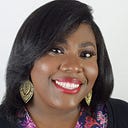The HBCU Series: Enrollment
In 1940, 85% of Blacks in postsecondary education were enrolled at what is now known as an historically Black college or university. By 1971, that number had dropped to 34% of Black students. Today, the number hovers around 10% enrolled at the 101 HBCUs located in 19 states and US territories. (For context, 45% of Black students in higher education are currently enrolled at a two-year/community college.)
Looking back at policy, we can trace the likely causes for this trend — the Brown vs. Board of Education decision of 1954, deeming segregation to be unconstitutional; the Civil Rights Act of 1965, which defined parameters and penalties for discrimination; the Supreme Court decision of 1978, allowing race to be considered in admissions decisions when all other factors were equal; and the expansive work of the NAACP and other organizations in litigation and pressuring states to desegregate higher education on the whole. Additionally, societal events like the Great Migration spread the Black populace beyond the South, opening further opportunities for education.
As access to colleges and universities expanded over time, so did awareness of the benefits of having a diverse student body on campus. Armed with the doctrine of Affirmative Action, colleges and universities began vying for the attention of “the best and brightest” students, irrespective of their race.
But access did not equate to better outcomes for students. Nor did that access come equitably to all — economic diversity remains a obstinate challenge for even elite (highly-selective) institutions that have relied on Affirmative Action to build incoming classes with the most racially diverse makeup in history, while still almost exclusively enrolling students from the top 1% of economic wealth. Affirmative Action was a starting point that helped move the needle, but did not address the underlying problem: college admissions are not the only ways in which higher education harbors inequitable processes.
Enrollment decline notwithstanding, HBCUs have remained a stalwart sector of American Higher Education, producing degrees and graduates from a highly marginalized demographic that is otherwise relegated to the “at-risk” or “high-risk, low-reward” category of students. Specifically, HBCUs enroll the highest percentage of Pell grant-eligible students: 75% of HBCUs have a student body that is over half Pell grant-eligible, compared to only 1% of non-HBCU institutions with a similar proportion of students. Many public and private HBCUs also maintain open-admissions, attracting higher numbers of academically underprepared, first-generation, and non-traditional aged students as well. These students choose HBCUs, and that choice is reciprocal.
As the American job market evolves to require some postsecondary credential for even entry-level positions across all industries, HBCUs will remain a vital, necessary part of the pipeline to workforce development in all dimensions of diversity. Increasing HBCU enrollment will be the outcome of outreach to deserving, striving students overlooked by institutions preoccupied with chasing rankings based solely on the transactional nature of education. The “HBCU experience” maintains its relevance and impact for students seeking a transformational personal and cultural exchange, in addition to a high-quality education.
